Utricularia purpurea
(A utricle is a sac.)
Lentibulariaceae
Brightening shallow waters and wet muds round town right now are intricate carnivorous plants, the bladderworts, in some places thousands of them. Several Utricularia species make Palm Beach County a better place, all of them showy yellow-flowered, except one, purple bladderwort having, duh, purple flowers.
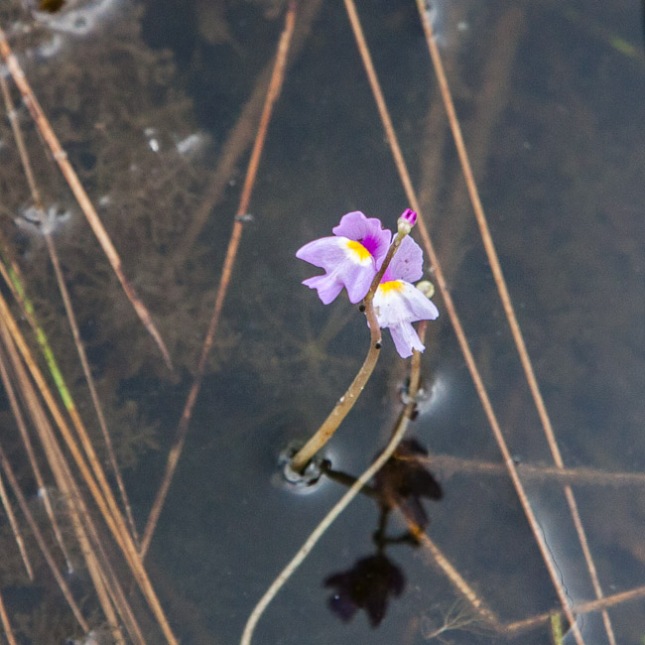
PBW by John Bradford.
We’ll get acquainted, but first a word about bladderworts in general. They typically have finely divided stringy leaves and live in shallow water or in wet mud. Flowerless you could mistake them for algae. Look closer though, on the foliage are tiny (let’s say 1 mm across) bladders, little slurp-traps with a trap door and trigger hairs. Tiny creatures swimming by trigger the triggers, and SNAP, the trap springs open like the wicked witch’s oven, and the small passerby becomes lunch.
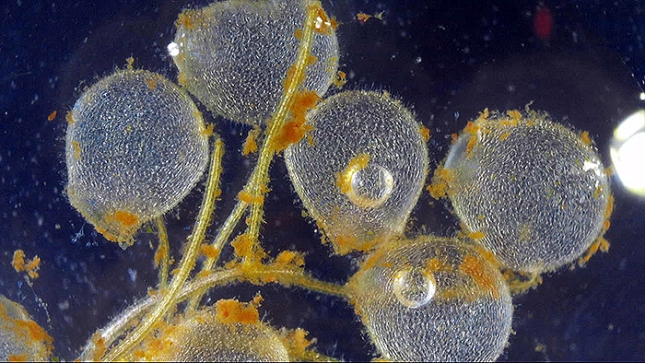
Death traps magnified, with clinging brown detritus.
Utricuaria purpurea is one of over 200 worldwide species of bladderworts, and its astounding distribution extends from Central America to somewhere along Hudson Bay. It takes the cold bravely via tiny tubers called turions hiding safely in the lake bottom mud. In our area the foliage masses can be the size of a garbage can, often looking brown.
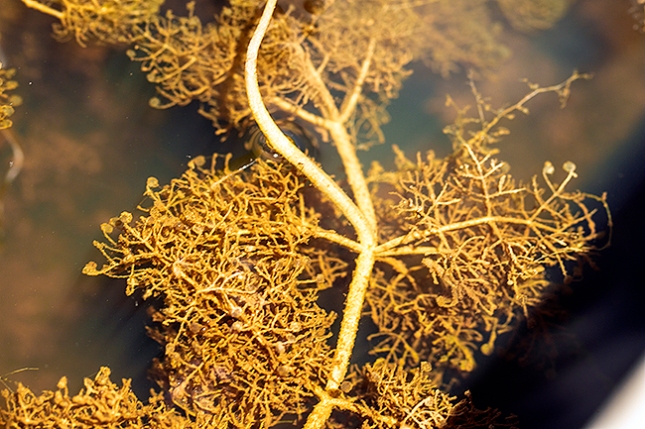
Foliage with traps.
The inconsistent tendency toward brown is not a sign of morbidity. Under the microscope even brown leaves sustain healthy chloroplasts. The brown seems to be largely material clinging to the foliage, including dead and living algae, mixed detritus, diatoms, fungi, cyanobacteria, and who knows what. No doubt the mix depends largely on the site.
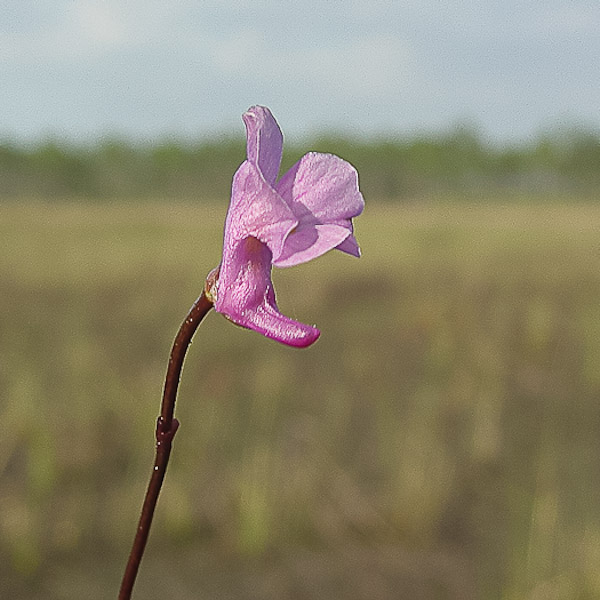
The flower by John Bradford.
Now back to those fearsome traps. Utricularia purpurea is one of the species calling the role of the traps into question. Today’s speculations are not necessarily mine, as other observers have given this matter study and thought.
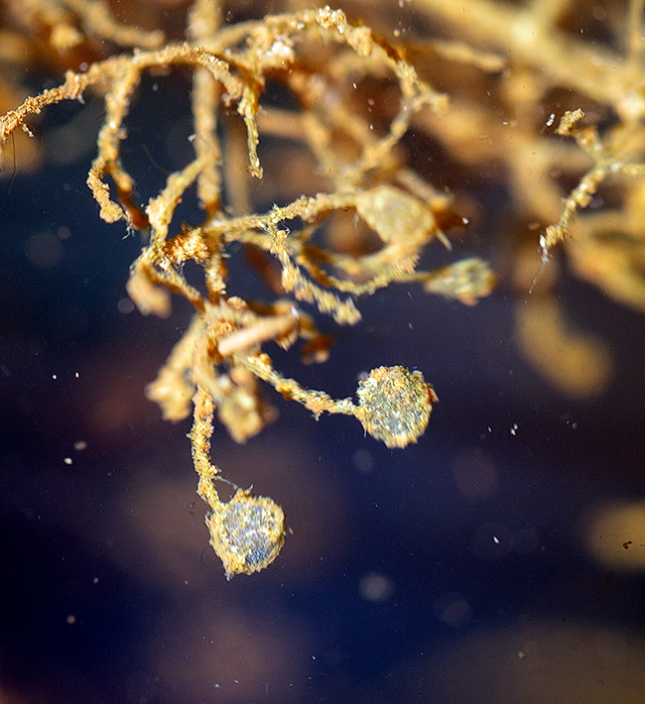
First of all, a study in one place and time is a snapshot, and just like a snapshot on Facebook, it is inadequate to assess the big picture. That said, there are reasons to suspect that, “catch a bug and eat it” is not the whole truth and nothing but the truth, even though the traps contain glands producing digestive enzymes. But there’s more to it: First of all, the plants invest substantial resources in making those traps, which, however, often appear under-rewarded with the expected victims (but not always). Secondly, the plants secrete carbon compounds into the trap fluid, as though they are feeding something. Third, the traps contain a lot of healthy squirming life other than dying victims. The traps are home to micro-ecosystems of bacteria, sometimes cyanobacteria, apparently healthy protists, and some small multicellular varmints. Below is a short movie made today of residents in the traps. Check it out:
CLICK HERE to see life in the trap.
Which are victims? Which are exploiters or predators? Which are bycatch? Which have a mutually beneficial relationship with the plant? Which are in multiple roles?
In the last-mentioned case, biologists plausibly wonder if the plant is feeding its trap colony food from photosynthesis (those carbon compounds) and receiving in exchange nitrogen and or phosphorus waste from those within. What a great area for research.
You may be asking, if the trap has all those tiny inhabitants, how do they get in? It turns out even minute stimuli can say, “open sesame,” and the traps can open and close repeatedly, even in a short time. I’ll bet I know how they all get out…ultimately as fertilizer. In short, perhaps instead of merely being trappers, bladderworts invented microscopic aquaponics.
—————————————————————————
For those who want to dig deeper:
https://www.jstor.org/stable/2657137?seq=1#page_scan_tab_contents
https://academic.oup.com/jxb/article/61/1/99/567342
theshrubqueen
August 18, 2018 at 4:03 pm
Time to lurk around some riverbanks, plants are amazing.
Uncle Tree
August 18, 2018 at 5:53 pm
Weird as weird gets, George. Or, as they say nowadays, “WTF? Are you kiddin’ me?”
My daily yogurt will never go LIVE, but these things liveth in UT,
and I’ll learn to deal with it symbiotically. Chow!
George Rogers
August 18, 2018 at 9:30 pm
What liveth in me arrives in kambucha…afraid to look under the microscope